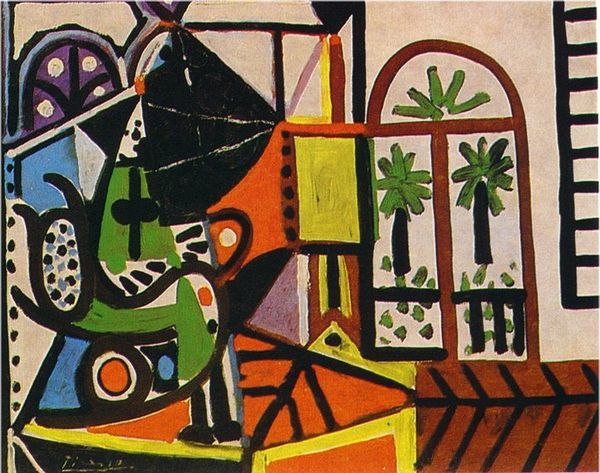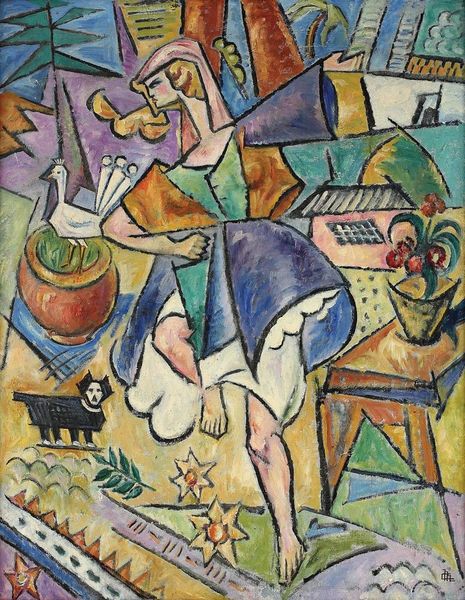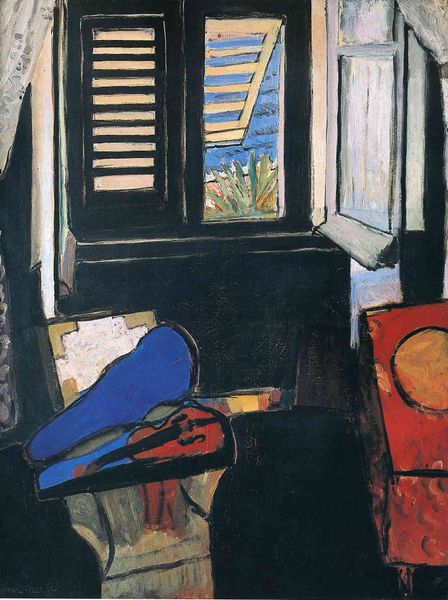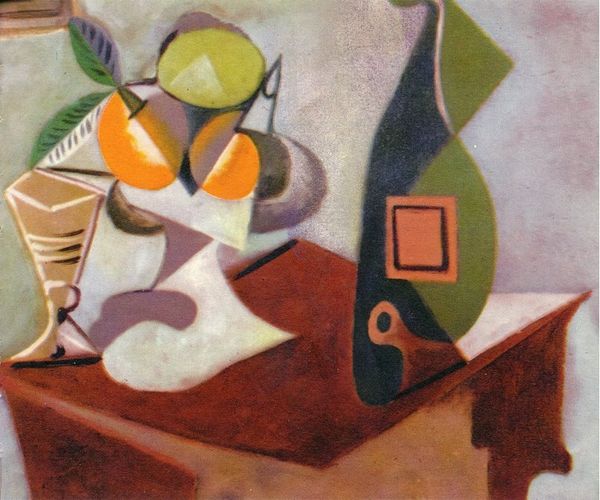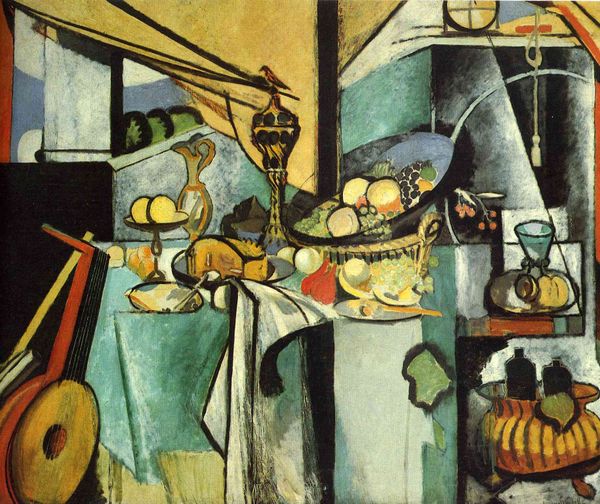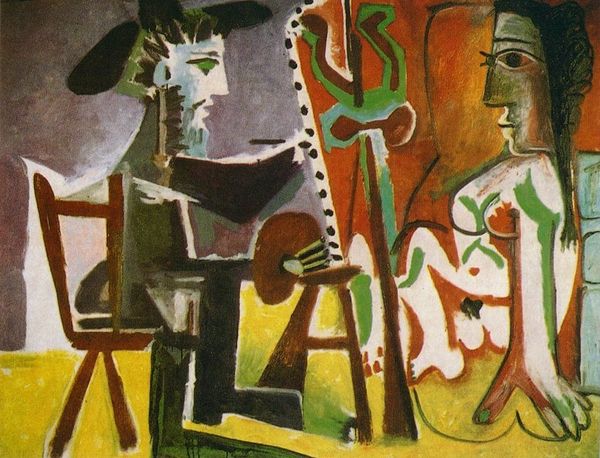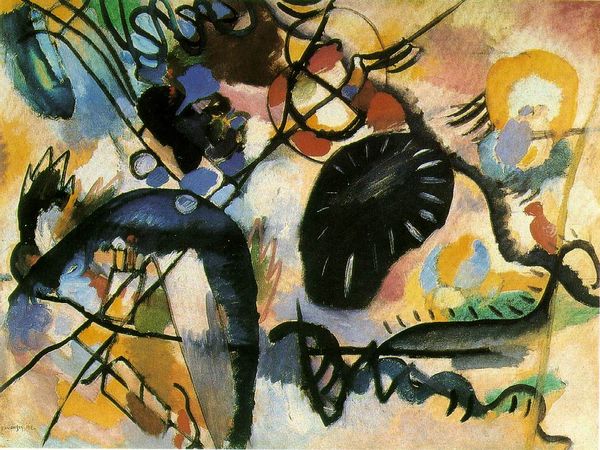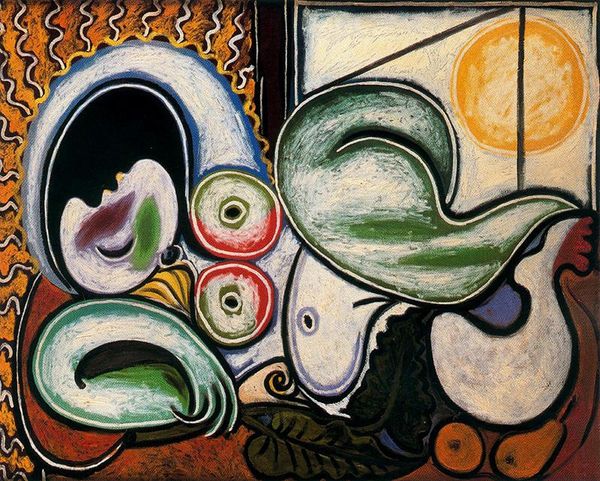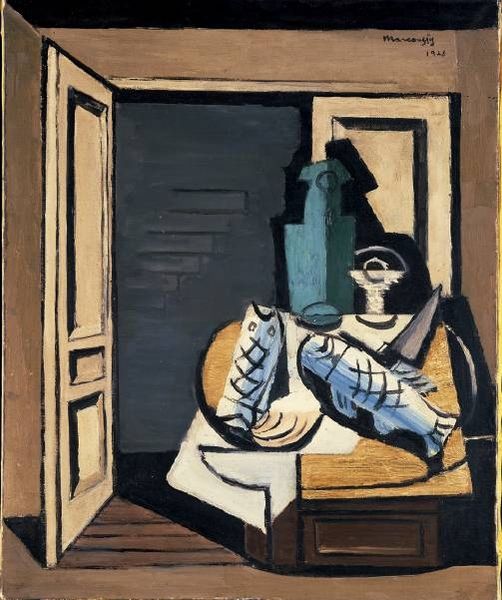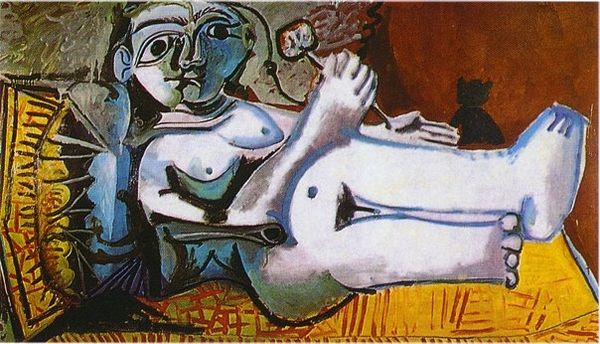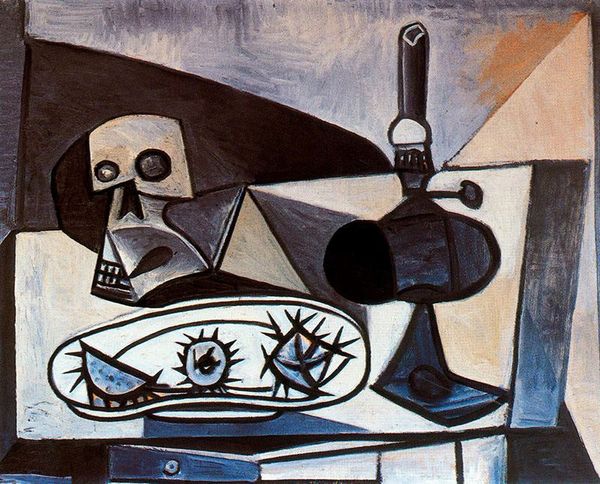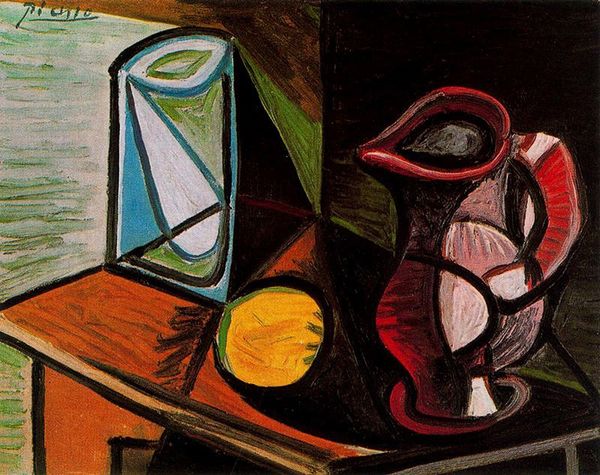
Copyright: Pablo Picasso,Fair Use
Editor: So, this is Picasso's "Female nude near the garden," painted in 1956 using oil paint. I'm immediately struck by the almost dreamlike quality; the figure is abstracted but still recognizable, blending into the natural landscape behind her. What symbols are at play here? Curator: It's interesting that you call it dreamlike. I see it as a kind of fractured memory. The woman, fragmented as she is, appears in pieces, almost like how memory functions—a collection of sensory impressions. The landscape isn't just a backdrop; it merges with the figure. Editor: How so? Curator: Look closely at the garden. Those simplified plants almost echo the shapes of the figure’s body, don’t they? The recurring symbols of fertility and growth. Do you see the dark green colours and sharp edges against the pale body? Consider Picasso’s interest in dismantling and reassembling perspectives – the woman is not just in nature but of it, her body becoming another landscape. It's as if he’s reminding us of the primordial connection between woman and nature. Editor: That's fascinating; I hadn’t considered the connection so literally. I was thinking more about his Cubist influences and breaking down form, but this interpretation opens up a whole new dimension. Curator: And what does that fragmentation suggest to you in relation to the female form itself? Editor: Perhaps, breaking down the singular representation of women and their cultural relevance...it sounds incredibly complex! Curator: Indeed! Perhaps more questions than answers emerge from studying works such as this! Thank you for the astute observation about the Cubist influence, since now I noticed much more symbols than the previous tours I made!
Comments
No comments
Be the first to comment and join the conversation on the ultimate creative platform.
